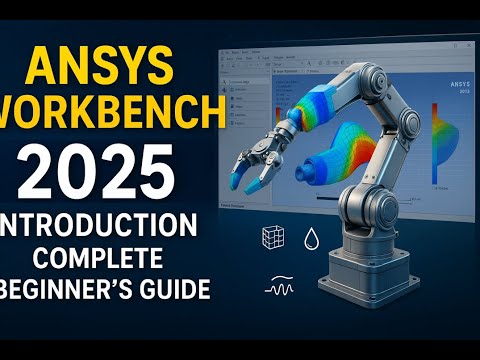In today’s data-driven world, researchers, scientists, engineers, and students rely on advanced tools to analyze and visualize data effectively. One of the most powerful and widely used platforms in this space is Origin Workbench by OriginLab.
Origin Workbench is a comprehensive data analysis and graphing software that combines powerful computational tools with high-quality graphing capabilities. It is designed for researchers across disciplines — from physics, chemistry, and biology to engineering, economics, and social sciences.
This complete guide will explore everything about Origin Workbench — its history, key features, benefits, applications, installation, pricing, comparisons with competitors, and FAQs. By the end, you’ll have a clear understanding of why Origin Workbench is considered one of the best platforms for scientific data analysis and visualization.
Table of Contents
What is Origin Workbench?
Origin Workbench is the integrated development environment (IDE) and user interface of Origin and OriginPro software, developed by OriginLab Corporation.
It provides a central workspace for:
Importing data from multiple sources
Performing statistical and mathematical analysis
Creating high-quality graphs and plots
Automating tasks with scripting (LabTalk, Python, R)
Managing projects and datasets efficiently
Essentially, Origin Workbench serves as the hub where all OriginLab tools come together, giving researchers a powerful environment to explore, analyze, and present their data.
History of Origin Workbench
1992 – OriginLab (then Microcal Software) introduced Origin as a graphing and curve-fitting software for scientists.
2000s – Expansion into statistical analysis, peak analysis, and signal processing.
2010s – Integration with programming languages like Python and R.
2020s – Enhanced automation, machine learning support, and collaborative features.
Over the years, Origin Workbench evolved into a robust platform with advanced data analysis capabilities and professional-grade visualization tools.
Key Features of Origin Workbench
Data Import and Management
Import data from Excel, CSV, SQL databases, MATLAB, and more.
Handle large datasets with efficient memory management.
Scientific Graphing
Over 100 graph types: 2D, 3D, contour plots, heat maps, waterfall plots, polar charts, and more.
High-resolution, publication-ready outputs.
Statistical Analysis
Descriptive statistics, ANOVA, regression, non-parametric tests.
Multivariate analysis, survival analysis, and quality control tools.
Signal Processing
Fourier transform, filtering, convolution, and smoothing.
Peak analysis, deconvolution, and fitting.
Mathematical Tools
Linear and nonlinear curve fitting.
Integration, differentiation, interpolation.
Programming & Automation
Supports LabTalk scripting language.
Python integration for advanced automation.
R Console for statistical computing.
Collaboration & Reporting
Project-based workspace for organizing multiple datasets and graphs.
Templates and batch processing for repetitive tasks.
Easy export to Word, PowerPoint, and PDF.
Customization
Fully customizable interface, graphs, and layouts.
User-defined functions and themes.
Benefits of Using Origin Workbench
For Researchers
Accelerates complex data analysis.
Produces professional publication-ready graphs.
Reduces manual workload with automation.
For Educators
Engages students with interactive data visualization.
Simplifies teaching of statistics and graphing.
For Engineers
Handles experimental, simulation, and signal data.
Provides accurate curve fitting and modeling.
For Businesses
Supports decision-making with data visualization.
Useful in quality control, market research, and R&D.
Origin Workbench vs OriginPro
Origin Workbench (Standard Origin):
Suitable for basic graphing and data analysis.
Includes core features like regression, curve fitting, and standard graphs.
OriginPro Workbench:
Advanced edition with extra features.
Includes peak analysis, advanced signal processing, image analysis, and surface fitting.
Designed for professionals and researchers with complex needs.
Applications of Origin Workbench
Academic Research – Data visualization in publications and theses.
Engineering – Analyzing mechanical, electrical, and civil engineering data.
Life Sciences – Biological data visualization, drug response curves, survival analysis.
Chemistry & Physics – Spectral analysis, kinetics, and material characterization.
Social Sciences – Survey analysis, statistical trends, behavioral data.
Business & Economics – Market trends, forecasting, and financial modeling.
How to Install Origin Workbench
Download – Visit OriginLab.com and download the installer.
Install – Run the installer and follow setup instructions.
Activate – Enter your license key (trial or full).
Customize – Set up toolbars, scripting, and workspace layout.
Origin Workbench Pricing (2025 Update)
OriginLab offers flexible pricing models:
Academic License:
Origin: ~$750 (perpetual)
OriginPro: ~$1,150 (perpetual)
Student License:
OriginPro Student version: ~$149
Commercial License:
Origin: ~$1,150
OriginPro: ~$1,650
Annual Subscription: Available for reduced upfront cost.
Origin Workbench Alternatives
MATLAB – Advanced computation and visualization, but more expensive.
GraphPad Prism – Popular in life sciences, user-friendly interface.
R & RStudio – Open-source, powerful but requires coding skills.
Python (Matplotlib, Pandas, Seaborn) – Free and flexible, requires programming knowledge.
Excel – Common but limited for advanced visualization.
Origin Workbench Tutorials & Learning Resources
Official Documentation – Available on OriginLab’s website.
YouTube Tutorials – Step-by-step guides on graphing and analysis.
User Forums – Active community for Q&A.
Workshops & Webinars – Regular training by OriginLab.
Sample Projects – Pre-built kits for beginners.
Pros and Cons of Origin Workbench
Pros
Wide range of graphing and analysis tools
Publication-ready visuals
Integration with Python and R
Strong academic and research support
Automation for repetitive tasks
Cons
High cost compared to some alternatives
Steeper learning curve for beginners
Requires installation (not fully cloud-based)
Future of Origin Workbench
AI Integration – Smarter data analysis with machine learning.
Cloud Collaboration – Cloud-based sharing and teamwork.
Enhanced Automation – More Python libraries and no-code workflows.
Broader Industry Applications – Expansion into healthcare, finance, and AI research.
Conclusion
Origin Workbench remains one of the most powerful platforms for data analysis and scientific graphing in 2025. Its ability to combine robust computational tools with high-quality visualization makes it a preferred choice for researchers, engineers, and educators worldwide.
While it comes with a learning curve and licensing costs, the benefits far outweigh the drawbacks for those serious about professional-grade data analysis and visualization.
Whether you are a student, a researcher, or an industry professional, mastering Origin Workbench can enhance your ability to analyze, interpret, and present data effectively.
FAQs About Origin Workbench
Q1. What is Origin Workbench used for?
Origin Workbench is used for scientific data analysis, statistical computations, and professional graphing.
Q2. Is Origin Workbench free?
No, but OriginLab offers trial versions and discounted student licenses.
Q3. What’s the difference between Origin and OriginPro?
OriginPro includes advanced tools like signal processing, image analysis, and surface fitting.
Q4. Can Origin Workbench integrate with Python?
Yes, Origin supports Python scripting for automation and advanced analysis.
Q5. Is Origin Workbench good for students?
Yes, especially with the affordable student license, it’s excellent for academic research.
Q6. How does Origin Workbench compare to MATLAB?
MATLAB is stronger in computation and coding; Origin excels in visualization and ease of graphing.
Q7. What operating systems support Origin Workbench?
Windows is officially supported, though some users run it on Mac via virtualization.
Q8. Does Origin Workbench work offline?
Yes, once installed and activated, it works fully offline.
Q9. Can I export Origin graphs to Word or PowerPoint?
Yes, Origin supports exporting to Word, Excel, and PowerPoint seamlessly.
Q10. Is Origin Workbench worth buying in 2025?
Yes, for researchers and professionals who require advanced data visualization and analysis, it remains a top choice.












